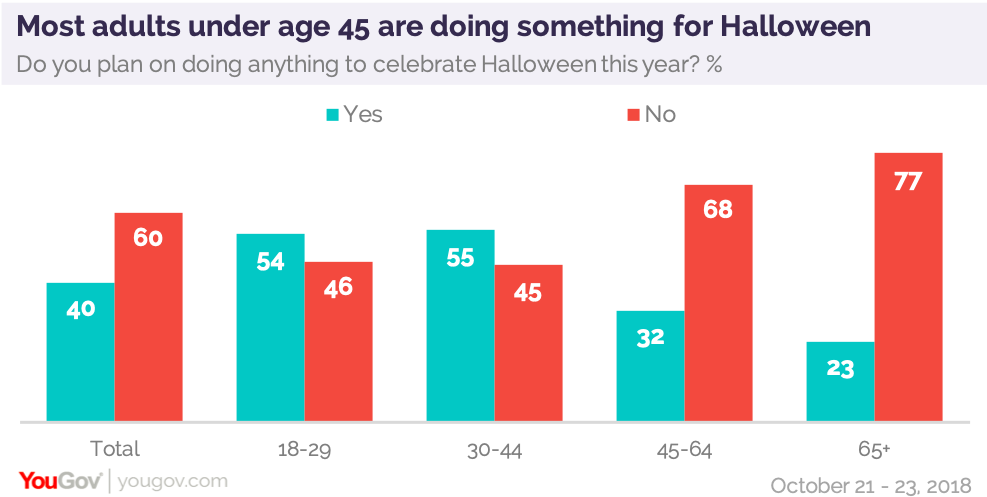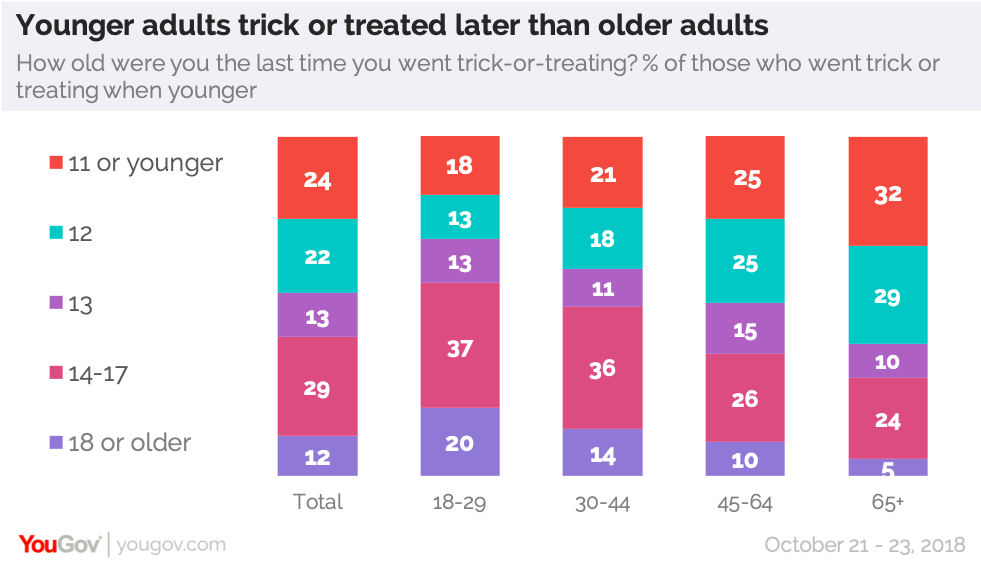But only 23% of those aged 65 and older have plans
On Halloween Night, there will be lots of trick and treating taking place – and over half the adults in the latest Economist/YouGov Poll say they give treats out to those ringing their doorbells. It’s one of the few Halloween questions in the latest Economist/YouGov Poll where older adults are more likely than younger ones to take action.
That may be because young adults are off celebrating the holiday themselves – and might not even be at home. More than half of those under 45 celebrate Halloween, something fewer than one in four of those 65 and older do.

Although half the public says it is “very safe” for children to treat or treat in their neighborhood (and nearly nine in ten say it’s at least “somewhat safe”), that’s less true in large cities. Still, residents in big cities are just as likely as those who live in less populous places like suburbs and smaller cities to report that children do treat or treat in their neighborhoods, though they are less likely personally to give out treats. There is also less trick or treating in rural areas, where most say it is very safe, probably because of their lower population density.
Nine in ten Americans went trick or treating when they were younger. Most stopped by the time they were 13. Older adults stopped even earlier. But among those under the age of 30, 20% continued even after they became adults.

When should you stop trick or treating? A third say one should stop before the age of 13, and more than half would stop by 14.
Americans generally approve of trick or treating, but 10% don’t (and another 21% say they don’t have an opinion one way or the other). Most of those who disapprove say they personally trick or treated when they were younger, though today they don’t give out treats. That may be because they have religious objections to celebrating Halloween at all. A majority of those who don’t approve say they have religious objections to Halloween (overall, only 14% of non-Halloween celebrants report religious objections).
Candy clearly tops the list when it comes to the “best” treat item. Some also suggest money as a treat. What’s the worst treat? Apples and other fruit top the list, but there are also objections to candy corn, popcorn balls, pencils and toothbrushes. As for this year, many haven’t yet decided what they will give out, but candy continues to be the most popular.
See full toplines and tables results
Image: Getty







